Info
Subfamily: Panicoideae
Genus etymology: Koix is the Greek name for an Egyptian palm, Hyphaene thebaica (L.) Mart., perhaps in resemblence of the fruits
Species etymology: lacryma-jobi = "Job's tears" [Latin] = Job, a figure in the Bible noted for his great suffering; a reference to the large pale fruit which resembles a teardrop
Photosynthetic type: C4 (warm season)
Nativity: naturalized - intentional
First recorded in Hawaiʻi: 1895
Map
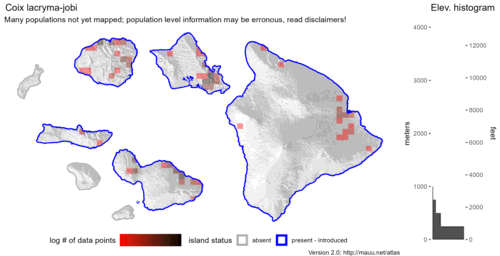

Inflorescence

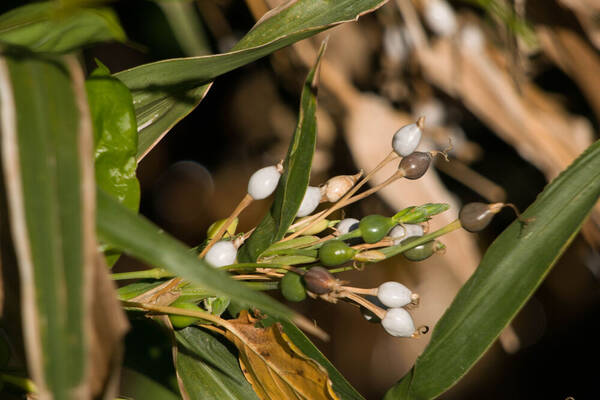
Plant
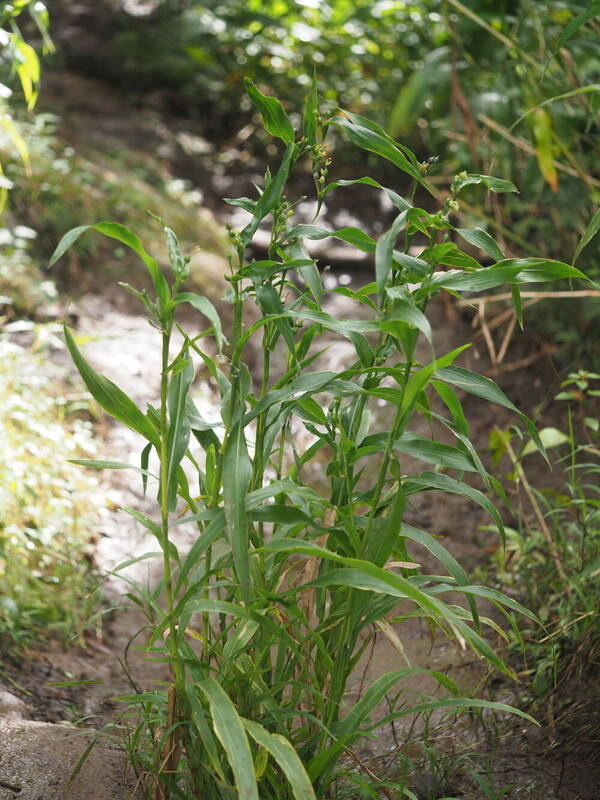
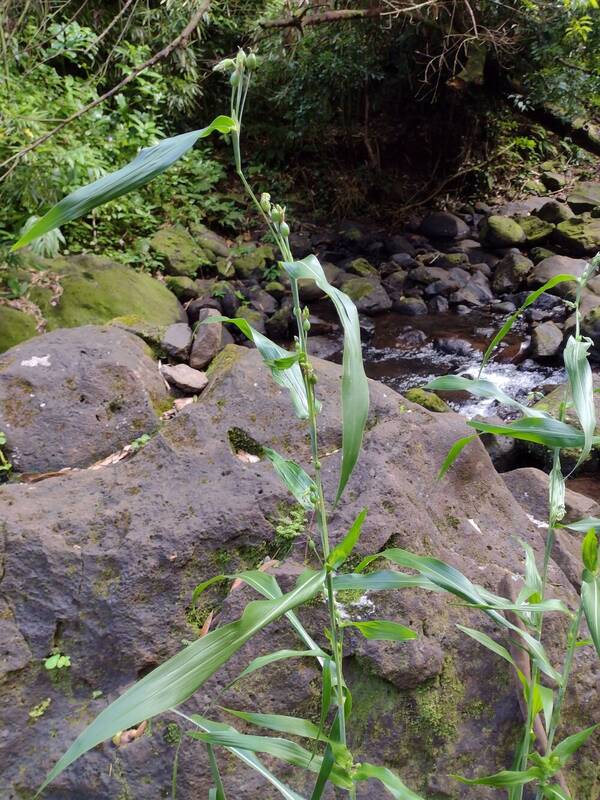
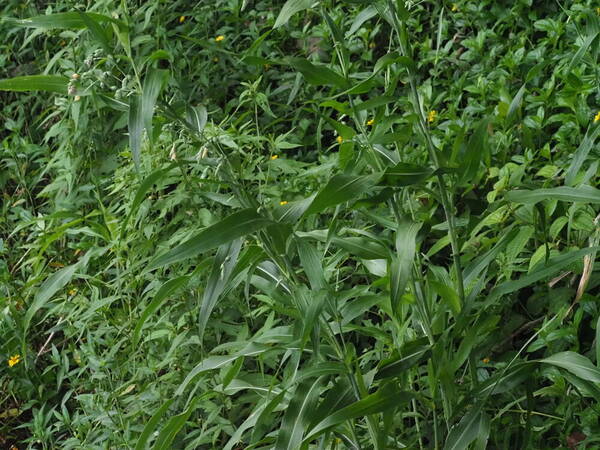
Habit
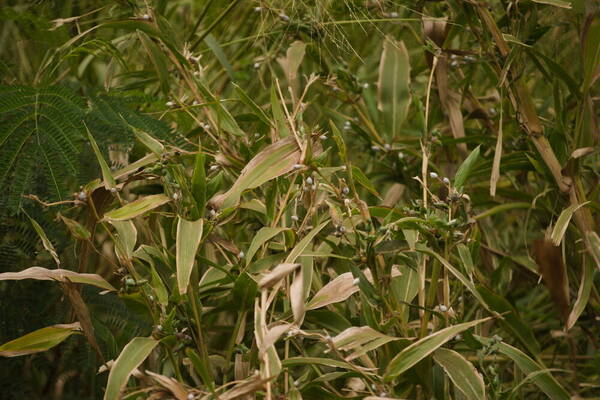
Spikelets
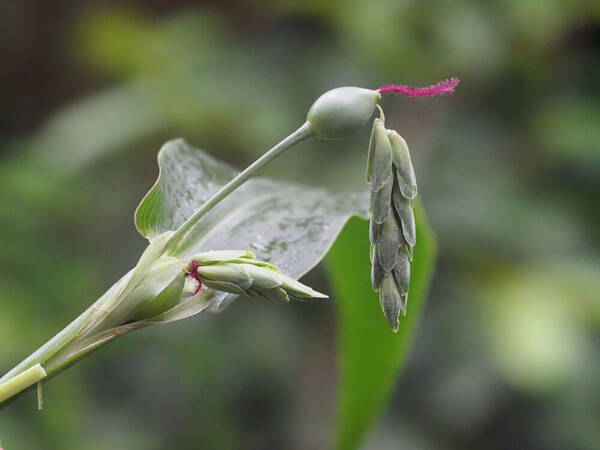
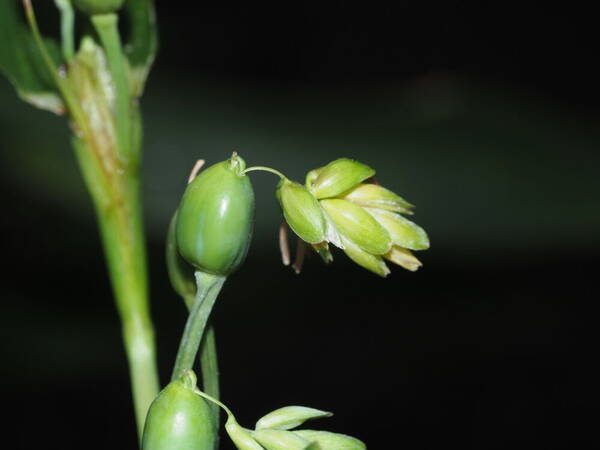
Landscape
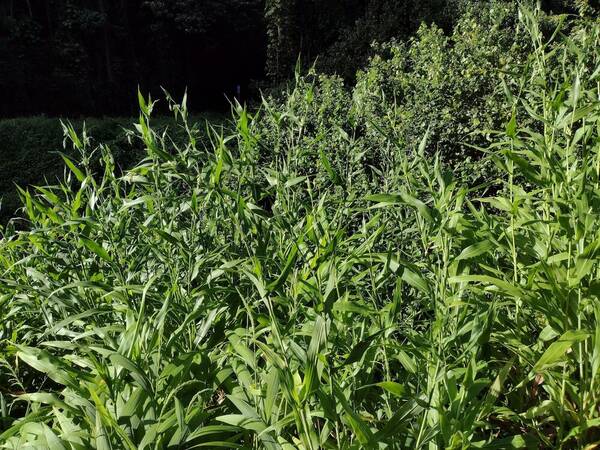
Description
Plants annual or perennial. Culms to 3 m. Leaves mostly cauline, evidently distichous; blades to 75 cm long, 1.5-6 cm wide. Involucres usually 8-12 mm, varying in color. Lower glumes of functional pistillate spikelets 6-10 mm, hyaline below, 5-7-veined, with a 1-3 mm coriaceous beak. Staminate rames 10-35 mm, with 3-25 spikelet pairs, disarticulating at maturity; spikelets 5-9 mm, dorsally compressed; glumes exceeding the florets, with 15+ veins; lower glumes elliptic to obovate, somewhat asymmetrical, margins folded inward, apices obtuse; upper glumes lanceolate to narrowly elliptic, keels often winged, apices acute; upper lemmas 5-8 mm, hyaline, elliptic to ovate, 3-veined; upper paleas similar but 2-veined; anthers 3-6 mm. 2n = 20.
(Description source: Barkworth, M.E., Capels, K.M., Long, S. & Piep, M.B. (eds.) 2003. Flora of North America, north of Mexico. Volume 25. Magnoliophyta: Commelinidae (in part): Poaceae, Part 2. Oxford University Press, New York. 783 pp http://floranorthamerica.org/Coix_lachryma-jobi )
Annuals; culms erect or sometimes decumbent at base and rooting at lower nodes, 30-70 cm tall, glabrous. Sheaths 2-6 cm long, glabrous, compressed, shorter than internodes, usually pilose at throat; ligule ca. 0.5 mm long, membranous, minutely erose; blades flat, 2-12 cm long, 1-5 mm wide, upper blades decreasing in size to nearly obsolete, upper surface usually sparsely long-pilose, margins scabrous. Inflorescences of 5-15(-22) digitate, ascending to spreading, purple, feathery spikes 4-6(-8) cm long; spikelets closely imbricate, 3-flowered; glumes narrow, acute, first glume 1-1.5 mm long, second glume 2-2.5 mm long; first lemma 2-2.5 mm long, obovate, keel sparsely pilose, marginal nerves silky pubescent in upper 1/2, apex rounded, awn slender, 0.5-1 cm long, callus appressed pilose; palea 2-2.5 mm long and nearly as broad as lemma, keels marginal; apical rudiment ca. 1 mm long, consisting of 2 triangular-truncate, thin, sterile lemmas, one within the other, situated at nearly the height of the fertile lemma, awns ca. 5 mm long. Caryopsis brown, fusiform, ca. 1.1 mm long, enclosed within the persistent lemma and palea. [2 = 20, 40, ca. 50, 56.]
(Description source: O’Connor, P.J. 1990. Poaceae, pp. 1481–1604. In: Wagner W.L., Herbst D.R. & Sohmer S.H. (eds.)., Manual of the flowering plant of Hawaiʻi. Vol. 2. University of Hawaii Press & Bishop Museum Press, Honolulu )